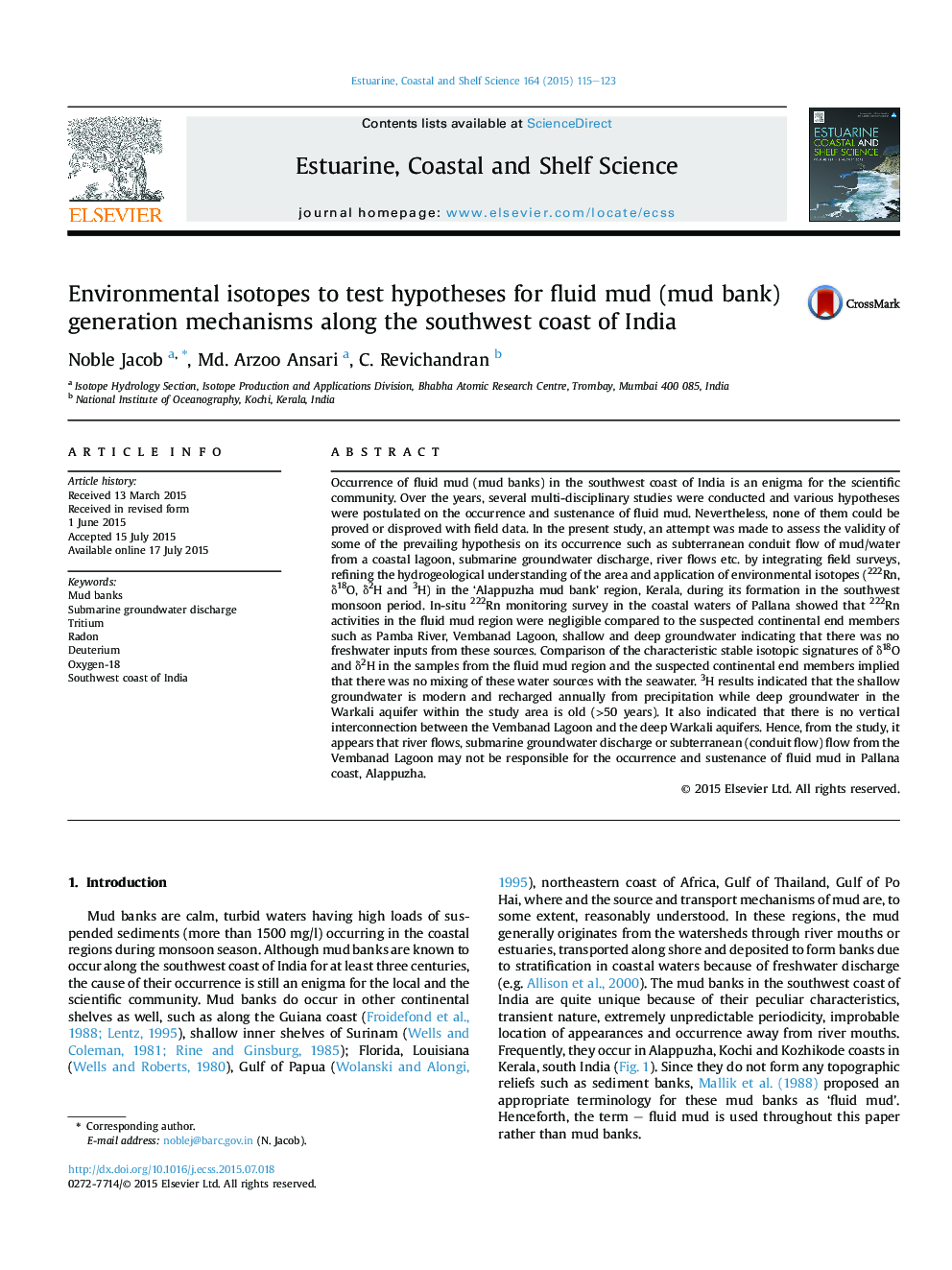| کد مقاله | کد نشریه | سال انتشار | مقاله انگلیسی | نسخه تمام متن |
|---|---|---|---|---|
| 6384682 | 1626633 | 2015 | 9 صفحه PDF | دانلود رایگان |
عنوان انگلیسی مقاله ISI
Environmental isotopes to test hypotheses for fluid mud (mud bank) generation mechanisms along the southwest coast of India
ترجمه فارسی عنوان
ایزوتوپ های محیطی برای تست فرضیه ها برای مکانیزم های تولید گل مایع (گل بانکی) در سواحل جنوب غربی هند
دانلود مقاله + سفارش ترجمه
دانلود مقاله ISI انگلیسی
رایگان برای ایرانیان
کلمات کلیدی
بانکهای گودال، تخلیه آبهای زیرزمینی، تریتیوم، رادون، دوتریوم، اکسیژن 18، ساحل جنوب غربی هند،
موضوعات مرتبط
مهندسی و علوم پایه
علوم زمین و سیارات
زمین شناسی
چکیده انگلیسی
Occurrence of fluid mud (mud banks) in the southwest coast of India is an enigma for the scientific community. Over the years, several multi-disciplinary studies were conducted and various hypotheses were postulated on the occurrence and sustenance of fluid mud. Nevertheless, none of them could be proved or disproved with field data. In the present study, an attempt was made to assess the validity of some of the prevailing hypothesis on its occurrence such as subterranean conduit flow of mud/water from a coastal lagoon, submarine groundwater discharge, river flows etc. by integrating field surveys, refining the hydrogeological understanding of the area and application of environmental isotopes (222Rn, δ18O, δ2H and 3H) in the 'Alappuzha mud bank' region, Kerala, during its formation in the southwest monsoon period. In-situ 222Rn monitoring survey in the coastal waters of Pallana showed that 222Rn activities in the fluid mud region were negligible compared to the suspected continental end members such as Pamba River, Vembanad Lagoon, shallow and deep groundwater indicating that there was no freshwater inputs from these sources. Comparison of the characteristic stable isotopic signatures of δ18O and δ2H in the samples from the fluid mud region and the suspected continental end members implied that there was no mixing of these water sources with the seawater. 3H results indicated that the shallow groundwater is modern and recharged annually from precipitation while deep groundwater in the Warkali aquifer within the study area is old (>50 years). It also indicated that there is no vertical interconnection between the Vembanad Lagoon and the deep Warkali aquifers. Hence, from the study, it appears that river flows, submarine groundwater discharge or subterranean (conduit flow) flow from the Vembanad Lagoon may not be responsible for the occurrence and sustenance of fluid mud in Pallana coast, Alappuzha.
ناشر
Database: Elsevier - ScienceDirect (ساینس دایرکت)
Journal: Estuarine, Coastal and Shelf Science - Volume 164, 5 October 2015, Pages 115-123
Journal: Estuarine, Coastal and Shelf Science - Volume 164, 5 October 2015, Pages 115-123
نویسندگان
Noble Jacob, Md. Arzoo Ansari, C. Revichandran,
